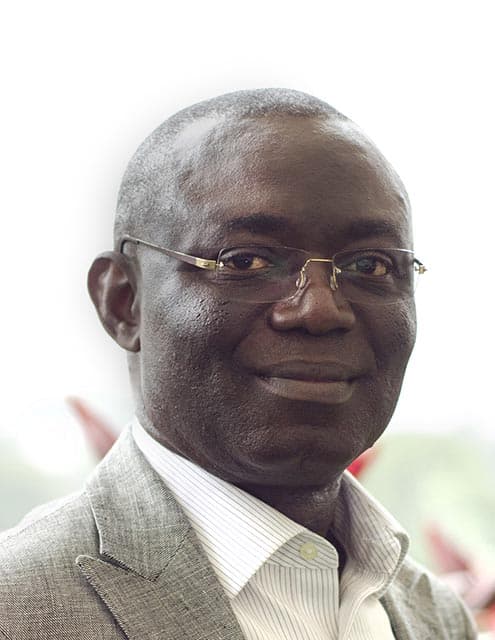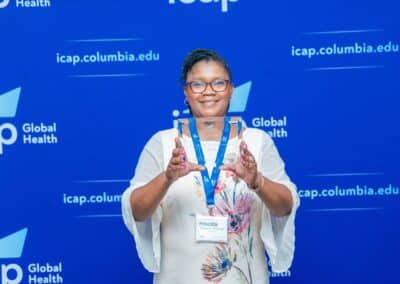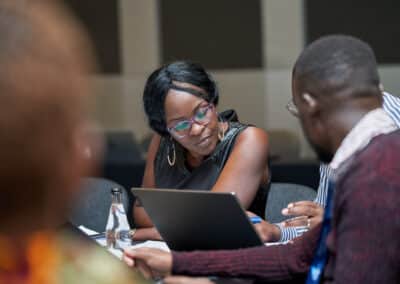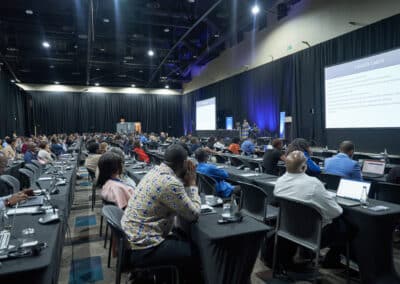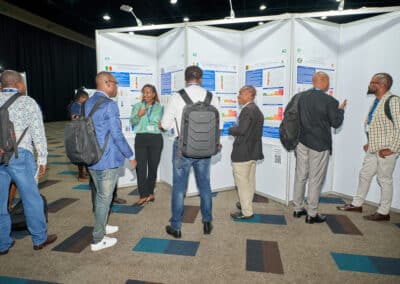Peter Preko, MB.ChB, MPH, is the Project Director for CQUIN, providing technical support and mentorship to a team of 14 national DSD coordinators. Since March 2020, the DSD coordinators have provided ongoing insight into the adaptations countries have made to DSD models in the context of COVID-19. Dr. Preko gives us an overview of these changes.
How have most countries adapted DSD during the COVID-19 pandemic?
In general, most countries have expanded the eligibility criteria for DSD. For instance, some countries had previously limited less intensive DSD models to people doing well on antiretroviral therapy (ART) – those who had been on ART for at least six months, those with suppressed viral load, and so forth. Several countries have scrapped one or both of these requirements, and are giving multi-month dispensing (MMD) to people without viral load suppression and those just initiating ART. The whole idea is to reduce the frequency of health facility visits, both to decongest health facilities in preparation for a wave of COVID-19 cases and to protect people on ART and healthcare workers from potentially contracting COVID-19.
What unique challenges have the network countries had in implementing some of these DSD models?
One important challenge has to do with monitoring and evaluation (M&E).
In some countries, data collection has been affected by travel restrictions and lockdowns, which prevented data collectors and people doing data quality assurance from visiting health facilities. In addition, most countries have had challenges documenting which people are receiving MMD as a result of COVID interventions versus who is receiving MMD because they are already suppressed and meet the requirement for less intensive DSD models. We are now trying to figure out solutions for M&E, in collaboration with the network countries.
Another challenge has been the uncertainties about ARV supply chains in the context of global lockdowns. Although some countries wanted to implement more than 3-MMD, fears of ARV supply interruption prevented them from instituting MMD. Lockdowns and curfew restrictions have had some unplanned negative effects, such as impairing drug pick-ups in countries like Liberia, Sierra Leone, and parts of Kenya. However, countries responded by tapping into a multi-sectoral approach to provide expanded community-based DSD, including home delivery of ARVs to ensure no one was left behind. We have also seen that some national laboratories are prioritizing testing for the novel coronavirus over routine viral load monitoring, which does raise concerns about the public health impact of these challenges, especially on people who are not virally suppressed or for people who are failing treatment.
What would be the best way for network countries to respond to some of these challenges going forward?
We’ve seen wonderful innovations that go far beyond MMD – especially creative approaches to community-based ART delivery and adherence support. The beauty of the CQUIN network is that it enables very rapid sharing of these innovations and best practices, through our WhatsApp groups, communities of practice, website, and webinars. Monitoring the impact of these changes in program design is critical – we need to know if they work! Investing in enhanced M&E and implementation research is a really high priority, and we’re advocating for this in multiple settings. We need this information so we can pivot away from adaptations that are less effective, and also so we can highlight effective new models that should be continued even after the pandemic is over.
CQUIN responded to the pandemic by initiating the DSD COVID-19 webinar series in partnership with ITPC and the IAS DSD initiative. Can you share some feedback you’ve gotten from the network countries? Are any of the countries applying knowledge from these seminars in their own countries?
The response has been very positive especially with the exchange of policies and resources, guideline adaptations, and tools that people developed and shared with others. That also helped others to quickly develop their country policies and to scale up COVID-related activities. When we started the webinar series, only a few countries said they were giving six-month MMD. That changed. Only a few countries said they would give MMD for new ART initiations. That changed, and more countries started giving MMD to newly initiated patients. It was clear that countries were learning from each other and becoming more comfortable implementing interventions after realizing other countries were making bold decisions. The learning exchange has been great.
What is the most surprising intervention, model, or response that you have observed in reaction to the outbreak?
The first one is MMD for people initiating ART. I was in a pre-CROI workshop in March where global stakeholders were discussing this option as something that might be gradually adopted – at that time, it seemed like a high-risk strategy that countries could be reluctant to pilot. But the COVID-19 outbreak catalyzed the rapid implementation of this approach. Countries are also giving MMD to people on ART who are not virally suppressed – this really surprised me, and I’m very interested to learn how that turns out. Another pleasant surprise is the decision by some countries to support the home delivery of ARVs. What a great initiative to make sure there are no treatment interruptions!
Any other lessons learned?
The COVID-19 pandemic has taught countries, facilities, and health providers to trust recipients of care more, and to reduce some of the barriers to implementing DSD. And some countries have sprinted ahead, like Sierra Leone, which didn’t have any less intensive DSD models six months ago, and is now not only implementing MMD and CAGs, but is providing MMD to people as they initiate ART. It is sad to think about the number of people we have lost to COVID-19, but there has been a silver lining; the pandemic has forced countries to think outside the box and do things that would have taken them probably two years or more to decide to do.
View a summary document of DSD adaptations to COVID-19 in the network countries here
This interview is part of the series: Perspectives on Differentiated Service Delivery, exploring expert views and insights into the importance of differentiated service delivery in sub-Saharan Africa, and the unique challenges they face in advancing services for people living with HIV. For more updates on this series, and other network activities, sign up for our monthly newsletter.


